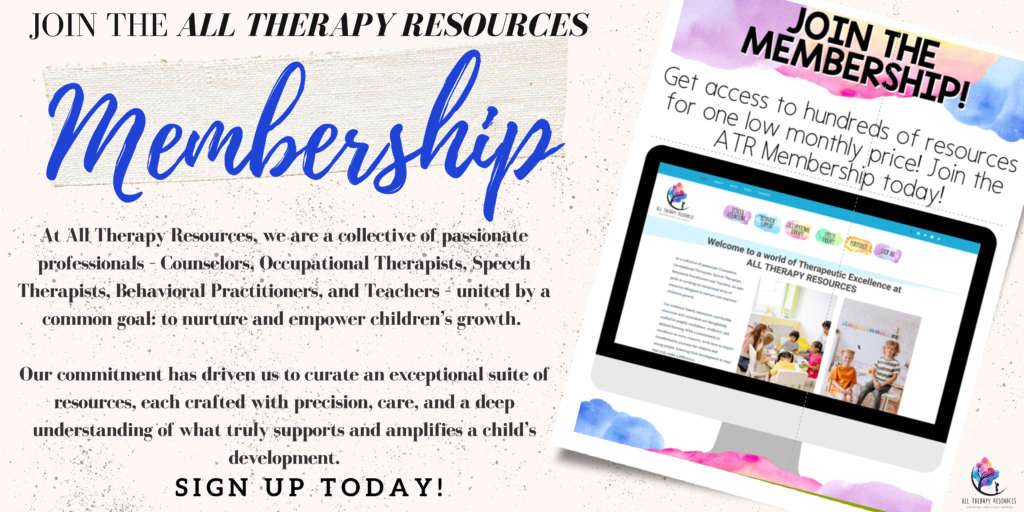The Therapist’s Inner Child: How Our Past Shows Up in Therapy

Have you ever found yourself unexpectedly emotional during a session? Maybe a child said something that hit a nerve, or an activity reminded you of a part of your own childhood. As professionals, we’re trained to focus on the child in front of us—but what happens when our own inner child enters the room?
This post explores how our past experiences, especially from childhood, can surface during sessions and subtly shape the way we show up in the therapeutic space. Far from being a flaw, this awareness can actually deepen our empathy and enhance our ability to co-regulate. But only if we are willing to pause, notice, and tend to the younger parts of ourselves.
What Is the Inner Child and Why Does It Matter in Therapy?
The “inner child” is often described as the emotional memory of our early experiences—the beliefs, needs, and wounds formed when we were young. It’s the part of us that remembers being left out, misunderstood, or deeply loved. And while we may grow up and train professionally, those younger parts don’t disappear. They show up in our work: in how we connect, how we react, and how we hold space.
In play-based and relational therapy especially, where attunement is key, the therapist’s inner child is often quietly present. A child’s laughter may trigger joy, but their rejection may trigger old feelings of inadequacy. A client’s silence may echo a household where feelings were unsafe. When we’re unaware, we risk reacting from these places instead of responding with professional intention.
When the Past Speaks: Real Moments from the Play Room
There was a moment early in my career where a quiet six-year-old client was refusing to engage in any activity. She tucked herself tightly into a corner and avoided my gaze. I noticed a wave of anxiety and urgency rise in me—I suddenly needed her to interact. I offered game after game, shifting strategies too quickly, trying to earn her attention.
It wasn’t until I sat in clinical supervision later that week that I realized what was happening: my own inner child—who once felt invisible in a noisy family—was being activated. That part of me didn’t just want therapeutic success. She wanted to be seen. The urgency wasn’t about the client; it was about me.
Another time, a young boy became dysregulated and started throwing toys. Instead of calmly containing the moment, I felt a rush of helplessness and dread. I later connected this to an early memory of being overwhelmed by a sibling’s rage—never knowing how to stay safe or respond. My nervous system didn’t know I was in a therapy room as an adult. It thought I was back there, as a little girl with no power.
These are just two examples, but they’re not uncommon. In fact, they’re deeply human.
How Our Inner Child Influences Our Work
Triggers and countertransference
Therapists are trained to recognize countertransference, but the inner child lens invites deeper reflection. When we notice intense emotional reactions to a client’s behavior, it’s often our inner child responding. A child refusing help may evoke feelings of rejection. A defiant tone may tap into old wounds of being disrespected or unheard.
Over-identification
Sometimes, we see our younger selves in the children we work with—and the pull to rescue, fix, or comfort can become strong. While empathy is essential, over-identification clouds boundaries and objectivity. It can also place pressure on the child to unconsciously meet our unmet needs.
Avoidance
On the flip side, when a child mirrors something unresolved in us, we may unconsciously avoid going deeper. A child expressing grief may stir emotions we haven’t fully processed. Without self-awareness, we may steer away from topics or prematurely shift the session.
Practical Ways to Acknowledge and Tend to Your Inner Child
Build regular reflective space
Set aside time weekly—whether in supervision, journaling, or peer debriefing—to explore not just what happened in a session, but how it felt in your body. Ask:
- What part of me was activated?
- What age did I feel in that moment?
- What might my inner child have needed?
Notice the “felt urgency”
If you find yourself urgently needing to “fix” something in session or win a child’s engagement, pause and reflect. That urgency often belongs to the past. Giving it space outside the session can release its grip.
Practice self-compassion
Working in trauma or school-based settings is demanding. When your inner child surfaces, speak to yourself gently. “It’s okay that this feels hard. I see the younger me trying to help. But I’m the adult now, and I’ve got this.”
Reparent through ritual
Engaging in small acts of kindness toward your inner child can be grounding. That might mean coloring during a break, listening to music from childhood, or bringing a grounding object into your office as a quiet anchor.
Engage in your own therapy
Even seasoned therapists benefit from therapy. In fact, many find that their most profound professional growth happens alongside personal healing. Investing in your own inner work strengthens the container you offer others.
When Inner Work Enhances Therapeutic Presence
As a play therapist and counselor, I’ve come to believe that our capacity to hold children’s pain is directly linked to our ability to sit with our own. The goal isn’t to be a blank slate—but to be a self-aware, regulated presence.
One of my most meaningful moments came during a session with a withdrawn eight-year-old. She whispered, “I don’t think anyone really listens to kids.” I nodded and simply said, “That must feel lonely.” But inside, my younger self whispered too, “I know that feeling.” And in that moment, we were both seen—not because I made the session about me, but because I stayed connected to her experience while grounded in my own.
That’s the power of inner child work—not just healing ourselves, but showing up more whole for the children in our care.
Final Thoughts: Embracing the Therapist’s Inner Child
Your past doesn’t disqualify you from being an effective therapist—it informs and deepens your work. But only when it’s integrated.
The children we support don’t need us to be perfect. They need us to be real, regulated, and relational. When we know the voice of our own inner child, we’re less likely to confuse it with theirs. And we’re more able to meet them—not from a place of reaction, but from rooted presence.
Want More Tools Like This?
If you’re passionate about deep, relational, trauma-informed therapy with children, the All Therapy Resources Membership is designed for you. With over 1,000 creative, evidence-aligned resources (including play therapy tools, reflection templates, and inner child-friendly visuals), you’ll always have support to care for your clients—and yourself.
Visit https://membership.alltherapyresources.com to explore what’s waiting inside.













